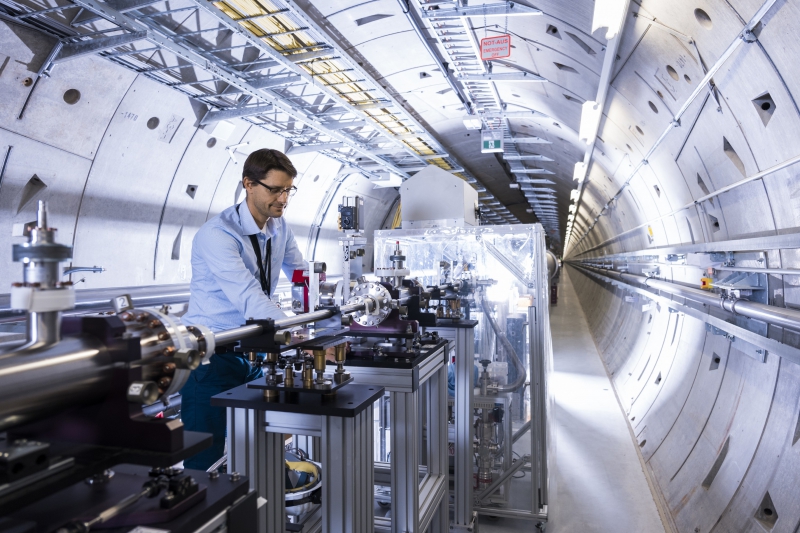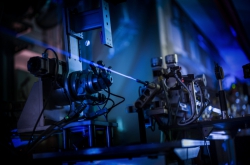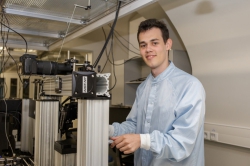About European XFEL
The European XFEL is an international project aimed at the creation of the world’s largest free-electron laser intended for solving a wide range of tasks in both fundamental and applied research, including medicine and cutting-edge technology. Costing over a billion euros, the project was developed at the DESY research center in Germany between 2009 and 2017. Co-sponsored by several countries including Russia, which covered 27% of the construction costs, the European XFEL was officially opened in Hamburg on September 1, 2017.
The 3.4-kilometer-long tunnel for the European XFEL runs 6 to 38m underground from the site of the DESY research center in Hamburg to the town of Schenefeld, where the experimental stations, laboratories, and administrative buildings are located.
Russian scientists’ work at the facility is conducted under the aegis of the national scientific and educational association “Mega-Scale Research Facilities”, which is coordinated by the National Research Center “Kurchatov Institute”. ITMO University forms part of the association, which aims to develop projects to be implemented on XFEL and other mega-scale research facilities.
But this isn’t ITMO University’s first foray into the field. In 2015, the Transnational Scientific and Education UniFEL Center for Advanced Methods of Materials Research was founded at ITMO in collaboration with the Freiberg University of Mining and Technology (TU Bergakademie Freiberg). As per the cooperation agreement between the two universities, the Russian and German researchers agreed to work on joint projects to be run at the European XFEL, as well as develop joint Master’s and PhD educational programs.
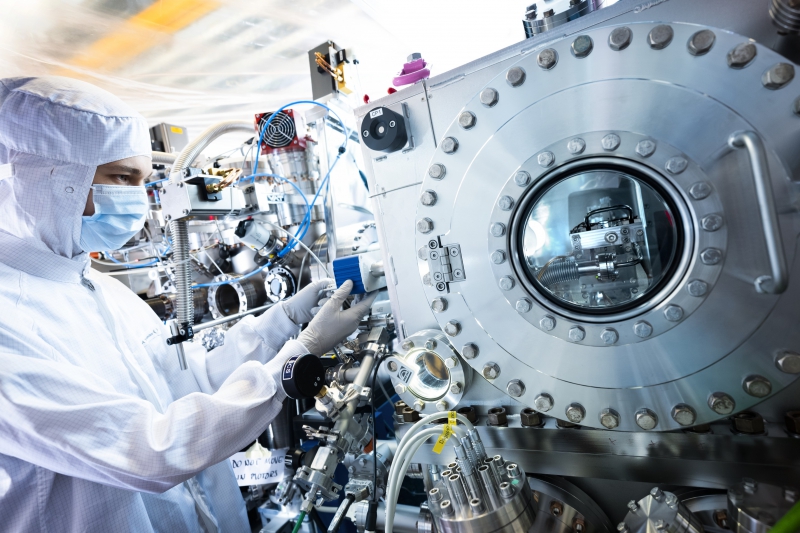
In October 2018, a group of ITMO University scientists went to Germany to work at the XFEL research facility. They conducted research on the crystalline framework and composition of nanowhiskers, which are nanomaterials with high spatial and energy resolution of the electronic structure and atomic formation. The ten-day project allowed the scientists to generate a large body of data which potentially will shed a new light on the structure of nanocrystals. You can read about the experiment in this article by ITMO.NEWS.
New research
In May 2019, ITMO researchers received an approval for their proposal to conduct another research project at European XFEL. The new research will be conducted in the field of ultrafast demagnetization and all-optical switching of magnetization in materials containing thin cobalt films. Cobalt is different from other materials in that it has domains, which are magnetic structures capable of changing their magnetic state through domain wall movement. While this phenomenon is far from being a newly-discovered one, scientists still can’t pinpoint exactly how domain walls move when magnetic radiation occurs. In an attempt to answer this question, ITMO scientists will conduct a range of experiments at the XFEL facility.
Their research proposal outcompeted a large number of applications by scientists from all over the world.
“Given the sizeable competition, we were very lucky to have our proposal approved. To this date, this is the second research proposal by a Russian university to have ever been approved by the European XFEL Council. The Council evaluates all applications on the basis of two criteria: scientific novelty and feasibility. All this is because the facility’s staff are interested in generating world-class results to demonstrate the scientific value of the equipment, as it is expensive and there are lots of committees that need to be persuaded in the importance and effectiveness of the experiments carried out. It’s crucial that everyone works to achieve novel results with significant scientific importance,” comments Pavel Brunkov, professor at ITMO’s Faculty of Laser Photonics and Optoelectronics.
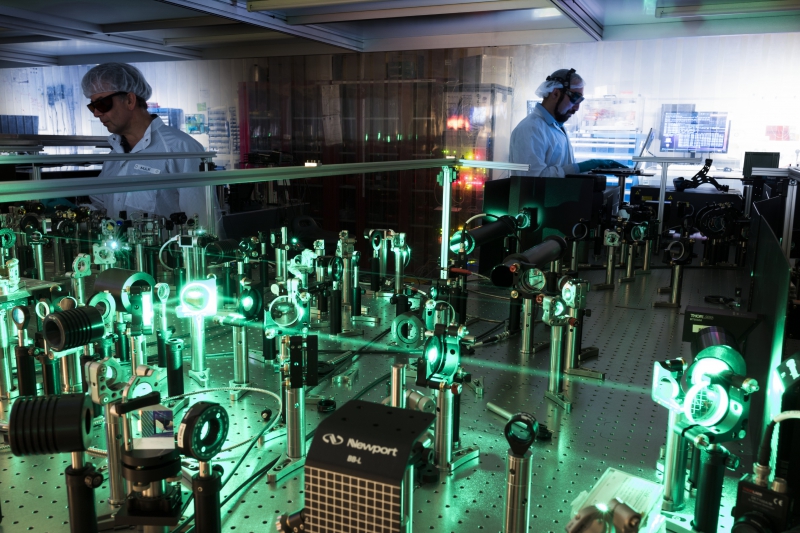
ITMO University scientists will conduct their experiments in several stages using the pump-probe approach. They will start by forming the domains through the application of magnetic field, after which the material will be subjected to pump, an optical pulse of the facility’s equipment that will start the switching of the domains. This will be followed by another stage called probe, which implies a series of short pulses that will allow to generate an accurate image- and video representation of the processes happening inside the material. In addition to achieving this goal, the scientists also plan to find ways for switching the domains and thus effecting changes to the local magnetic field.
The information acquired will hail an important contribution to research on the properties of cobalt. The results also carry significant value for the development of information storage devices, paving the way for high-speed, magnetic domains-based storage devices which will allow digital devices such as microprocessors to operate better and faster.
But for now, practical application remains a long-term objective. The scientists’ current focus is on the research of domain walls and their structure, which they will carry out in Hamburg in late September of 2019 together with their German colleagues.
